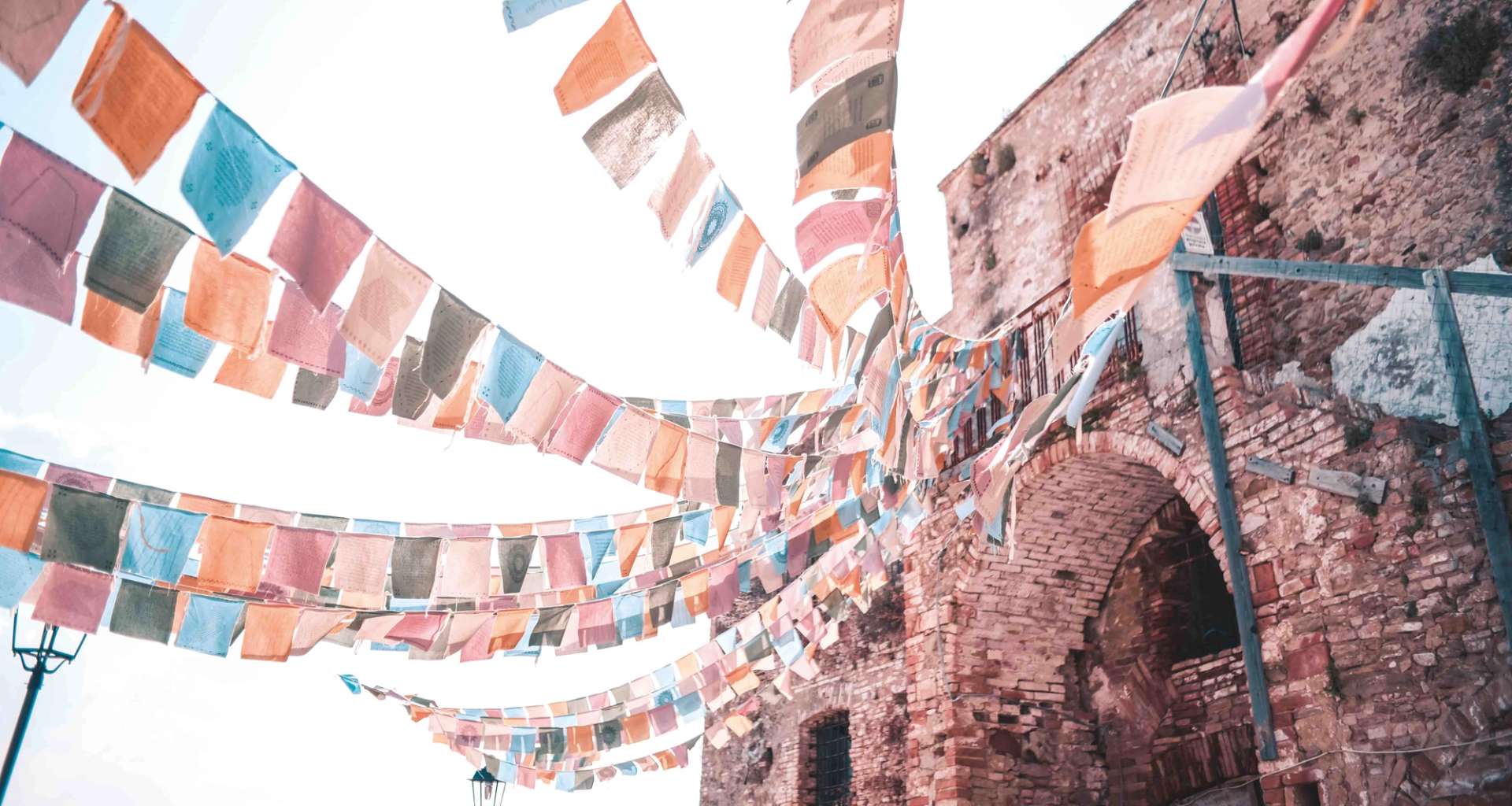At a time in history when we are bombarded by messages of alarm and urgency, Sabrina Mezzaqui’s work aims to gently scatter thoughts about slowness, care, and attention to one’s surroundings. Tibetan flags are small triangles of colored fabric (white, yellow, red, green, blue) tied together. They are hung on the tops of mountains or the roofs of temples, carrying prayers and printed images blessing life and the universe. The work consists of a thousand colorful flags screen-printed with 33 excerpts from beloved poems. The flags are hung in Pisticci, in the district of Terravecchia, in the highest point of the village, near the castle. The work is accomplished by fraying in the wind, unraveling in the rain, fading in the sun. The phrases are collected and sewn into a cloth book that can be consulted at the municipal library.
GENTLY SCATTERING IN THE AIR THOUGHTS ABOUT SLOWNESS, CARE, ATTENTION, WHISPERS FROM BELOVED POEMS…. THE WORK IS ACCOMPLISHED BY FRAYING IN THE WIND, UNRAVELING IN THE RAIN, FADING IN THE SUN
Many of the works of Sabrina Mezzaqui (Bologna, 1964) are conceived as a materialization of the passing of time and bring into play the sense of manual repetition for hours of minute gestures (stringing beads, cutting, folding, drawing small patterns). Writing often appears in her works (short texts, memoirs, literary references, reworked books) and the videos tell of slow times, recording variations in light or simple natural phenomena such as the dust near a half-closed window, the glare of the sun on the waves or falling snow.
AT A TIME IN HISTORY WHEN WE ARE BOMBARDED BY MESSAGES OF ALARM AND URGENCY, SABRINA MEZZAQUI’S WORK AIMS TO GENTLY SCATTER THOUGHTS ABOUT SLOWNESS, CARE, AND ATTENTION TO ONE’S SURROUNDINGS. TIBETAN FLAGS ARE HUNG ON THE TOPS OF MOUNTAINS OR THE ROOFS OF TEMPLES, CARRYING PRAYERS AND PRINTED IMAGES BLESSING LIFE AND THE UNIVERSE
Under Roman domination, Pisticci became an important agricultural center and in the year 1000 and recorded the presence of the Normans who formed the fief; the Benedictines founded the monastery of Santa Maria del Casale on an ancient Basilian settlement, now open to visitors. In 1688 a devastating landslide modified the territorial structure of the town, giving life to a new district, the “Dirupo”, risen from the rubble of the tragic event and today recognized among the “100 wonders of Italy”.
The territory, widely diversified and heterogeneous, embraces the hilly areas of the old town, those of Valbasento, and the flat areas that, from the hamlet of Marconia, reach the sea. The landscape of the Calanchi that surrounds the entire historic center of Pisticci is evocative, a unique spectacle and a strong tourist attraction for its lunar landscapes resulting from the erosion of the clay that has affected these areas over the centuries.







